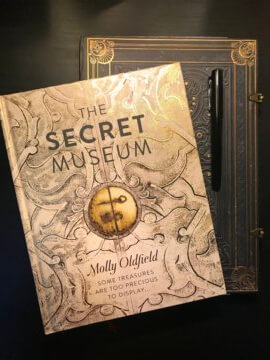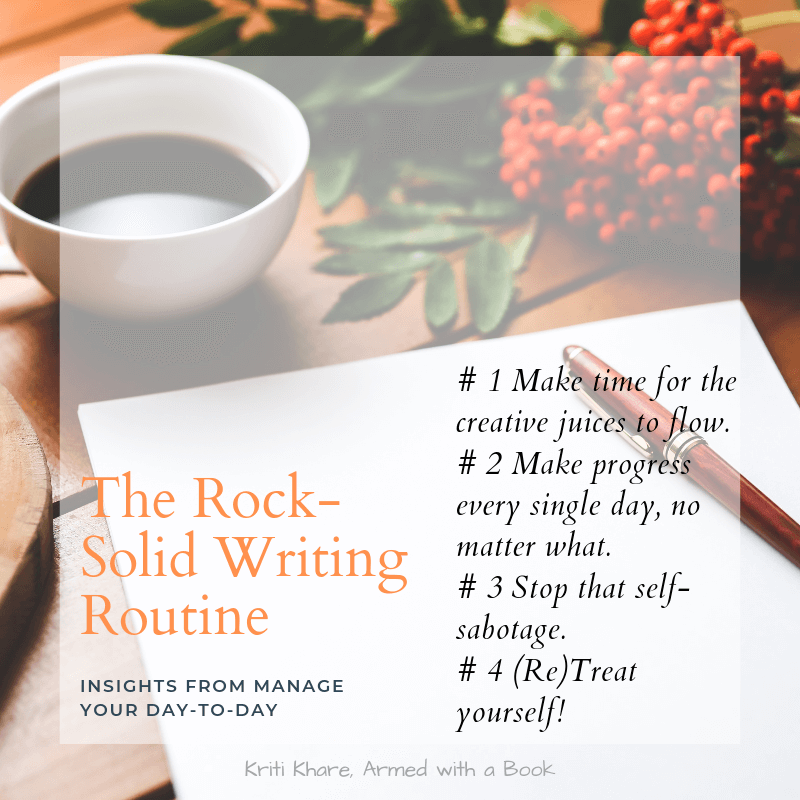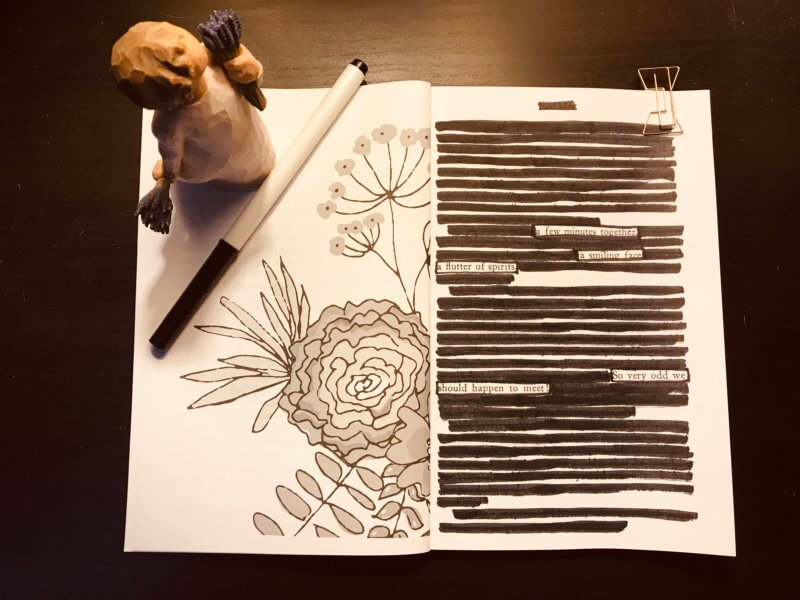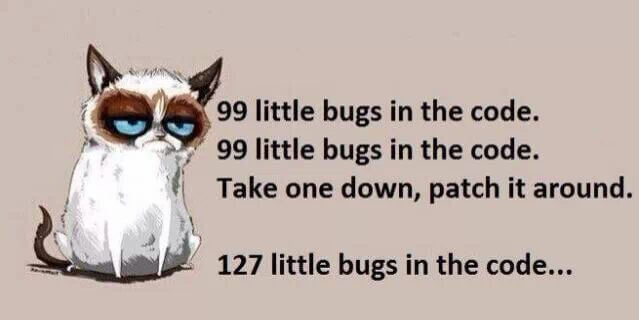Whether you played with real sand or with pens and beautiful notebooks, I bet you had a sandbox growing up. It might not have looked like a sandbox but it was a place where you were free to do as you wished, follow a fantasy to its completion, and guide the characters in your head to a happy ending. When I think about my childhood sandbox, I go back to my preteens: sitting on the floor, surrounded by stuff toys. I would be reading from a book, highlighting notes I wanted my stuff animals class to take. Then I would spend the next hour, writing those notes in every single notebook. It was both a reader’s and a writer’s sandbox, and I absolutely loved spending time there.

But where did the sandbox go where I could let my mind wander, chase ideas and, most importantly, just be? Do you have one?

I have been reading Manage your day-to-day: Build your routine, find your focus & sharpen your creative mind and as I mentioned in my previous article, it gave me actionable ways to build a rock-solid writing routine, shown on the left. When I reached the section on sharpening the creative mind, my highlighter, pen and bullet journal were ready for notes. That is how I was introduced to the act of unnecessary creation and writing solely for oneself.
Writing for Oneself
About a year and a half ago, I started my blog to write for pleasure, and documenting my growth. Time passed and I took on more collaborative projects with my peers. Between the pressure of publishing regularly, meeting the (unspoken) needs of the followers, promoting the articles on social media and researching new ideas, I forgot the audience I had taken up the pen for in the first place – myself. I did not make time to just sit and write.
After a break of about three months, when I finally had time to think about writing, I decided to learn to write for myself again. Not for the success of the blog or for getting more reads or likes, but for becoming a better writer, expressing complex ideas that I am interested in exploring and sharing the new things that I am learning.
To truly excel, you must continue to create for the most important audience of all: yourself.
Todd Henry (author of The Accidental Creative), Pg 173 of Manage your day-to-day
I established earlier that the writing routine may be composed of steps that do not involve writing at all, such as reading and researching. However, that is not writing everyday. That’s planning for writing another day!
So what can one do to write everyday? And why write everyday?
The Act of Unnecessary Creation
Todd Henry describes the act of unnecessary creation as pursuing something without expectations. There is no timeline to see this idea to fulfilment nor is there any extrinsic reward such as a payment or publishing online. Think of it like a no-strings-attached project – you can take it or leave at any time and you have nothing to gain from it. It is the sheer act of taking on that activity for some time that brings satisfaction.
Bullet journaling is a great example of doing something that is completely personal. Though I sometimes share the spreads I make and the way I organize my ideas, my bullet journal is exclusively mine. I can use washi tape, decide a theme and change it halfway, make drawings or water color paintings. When I am ready for a brain dump, I can count on it to be there. I write in it every day without fail, a couple of sentences about the day, often adding to lists of ideas. It is an act of unnecessary creation.
As I read about these unnecessary creations, two main questions crossed my mind, related to writing.
Q1: What can I create during unnecessary creation time?
# 1 Morning Pages
A well known example of unnecessary creation is morning pages. Julia Cameron introduced it as tool in her book The Artist’s Way. Morning pages are three pages handwritten in the morning. They are records of uncensored thoughts, ideas, worries and anything that comes to mind. They often come recommended by bullet journalists as part of the morning routine. Little Coffee Fox has a detailed article about how they can be a life-changer as well as tips for implementation.
If you prefer typing over writing, you can choose to type the morning pages on the computer. If you are curious, check out 750words.com, an online writing community website, which keeps track of your daily word count, provides insights, such as mood, about the writing, as well as connects you with fellow 750words-a-day people. I hope to write more about 750words.com and its creator in the near future, so stay tuned!
# 2 Writing Prompts
Remember in my last article I mentioned that I want to incorporate short writing exercises in my daily routine? Simple writing prompts could be “A letter to my future self, 10 years from now”. On the other hand, elaborate prompts might involve coming up with a story based on some basic elements of a plot. Check out the Plot Generator and Random Plot Generator for genre specific plot ideas and blurbs.
Looking for some books with prompts? Book Riot compiled a list of books to get one writing daily… And just in case you are wondering, at least two of them are in my Amazon cart right now.
# 3 Recycling words prompts, eg blackout poetry
While the first two acts of unnecessary creation involve coming up with words, engaging in blackout poetry creates new materials from the words that are already given. Popularized by Steal like an artist author, Austin Kleon, in blackout poetry, one crosses out all the words on a page, leaving only the ones that would form a poem.
Traditionally done on newspapers, you can get books specially for blackout poetry (the one I am using below as excerpts from Jane Austen’s Emma) or pick up any old book that you no longer want to read to get started. More on blackout poetry in the future!

Q2: How do I find time for unnecessary creation?
That’s a hard one. I tried morning pages about a year ago and writing in a notebook didn’t last very long. Nor did typing away on the computer. Sometimes I just wasn’t sitting in the right place in the morning to write enough words. Other times, I would run out of ideas and 3 pages seemed like a mountain peak while I was still hanging out at the foothills. This is one reason why 750words.com is great: it is an adapted form of the morning pages with the sole condition being to write everyday, whenever there is time.
Similar to my approach of developing a writing routine (aim: publishing), incorporating a habit like time for creation, needs to be taken slow in the beginning. Even Todd suggests in Manage your day-to-day that it is better to start once a day. We ultimately want to find a routine that works for us.
An Analogy with Computing
Just like sandboxes exist in playgrounds and in our heads, they exist in computing and software development as well.
A sandbox is a type of software testing environment that enables the isolated execution of software or programs for independent evaluation, monitoring or testing.
Technopedia
Simply put, developers build softwares in different environments rather than the ones they are ultimately marketed in. They try out different versions and functionalities, making code as efficient as possible, among other things. They do all sorts of adjustments before the software is made available for downloading! But to do all this, they need a space that is fool-proof, an isolated environment where no matter how much they mess up the code, other programs will not be affected.

The reason I mention this type of sandbox is to emphasize the occurrence and importance of mistakes. Everything that happens in a sandbox is not going to be stellar, but it does help us get better at our craft.
The Writer’s Sandbox
The aim of the Writer’s sandbox is the same: development of writing. In this sandbox, the writer tries many things.
- Some activities are structured, such as having a prompt to write from or a blurb to elaborate upon.
- Other times, the writer spends time mapping out the ideas, making drawings in the sandpaper and graphing new connections while breaking old ones.
- The writer sometimes emerges with a brilliant idea that feels amazing – it will get its own dedicated time and become aligned with a new goal.
- Most of the time though, the writer just plays in the sandbox, writing and spending time, getting to know the writer within.
The aim of the act of unnecessary creation is not to cause stress over practicing a skill. It is actually quite the opposite. It is the time to try out new ideas, shake up the usual writing routine and put on a different hat for some time.
In developing as a writer, we can’t not show up. Exercising our brain to write in different scenarios is a great way to practice these skills. Whether it ends up being a half-finished story, a poem about a cat or a concept map about grammar rules, these creations that start off as unnecessary in the writer’s sandbox, are actually windows to new worlds. They bring out the learner in us who wants to experiment and try new things and who is not afraid to be the child that we once were.
What kinds of unnecessary creation practices come to your mind? Do share on Twitter! Meantime, happy creating and keep the infographics below handy to keep the main points in mind! 🙂

Be First to Comment